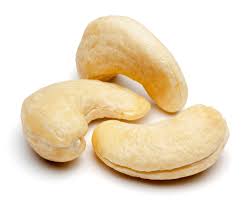Your Special Passover Connections
Passover starts Saturday evening, March 27
The Kehillah office will be closed on Monday, March 29, for Yom Tov
|
|
|
Join us for our second night Seder
on Sunday, March 28
|

Our Zoom seder will begin at 5:45 p.m. on Sunday, March 28. Please RSVP if you have not already done so. Watch for your Zoom link in your email as Passover nears.
Please have a copy of The Kveller Haggadah: A Seder for Curious Kids (and their Grownups) for each person at your table. Remember to order your copies through Amazon Smile, so Kehillah will receive a donation at no extra cost to you!
If you have not yet signed up for Amazon Smile, you can do it here.
To enhance our congregational seder, please include two special items in addition to your seder plate (see below for seder plate information).
- An item that, to you, demonstrates or represents freedom; and
- An item that, to you, expresses the joy and fun of celebrating Passover
We can't wait to see what you'll come up with!
|
|
 |
First, the plate
There are six parts to the seder plate. ( Note that some communities have five items on their seder plates, so if yours does, it's ok - the chazeret is the "extra.")
Beitzah
The roasted egg is symbolic of the festival sacrifice made in biblical times. It is also a symbol of spring - the season in which Passover is always celebrated.
Chazeret
Lettuce is often used in addition to the maror (see below), as a bitter herb. The authorities are divided on the requirement of chazeret, so not all communities use it. Since the commandment (in Numbers 9:11) to eat the paschal lamb "with unleavened bread and bitter herbs" uses the plural ("bitter herbs") most seder plates have a place for chazeret.
Zeroa
The shankbone is symbolic of the paschal lamb offered as the Passover sacrifice in biblical times. Some communities use a chicken neck as a substitute. Vegetarian households may use beets (which "bleed").
Charoset
Apple, nuts, and spices ground together and mixed with wine are symbolic of the mortar used by Hebrew slaves to build Egyptian structures. There are several variations in the recipe for charoset. The Mishna describes a mixture of fruits, nuts, and vinegar. Rabbi Sharfman likes Sephardic charoset made from figs, dates, other dried fruits, and spices
Karpas
Parsley is dipped into salt water (usually made using kosher salt) during the seder. The salt water serves as a reminder of the tears shed during Egyptian slavery.
Maror
Bitter herbs (usually horseradish) symbolize the bitterness of Egyptian slavery. The maror is used in the seder because of the commandment (in Numbers 9:11) to eat the paschal lamb "with unleavened bread and bitter herbs."
|
 |
Now, for the rest of the table
If you are preparing your own seder table, here's a list of suggested items. - A tablecloth, preferably white
- A pillow for leaning
- A Hagaddah ("telling"), the book that leads you through the seder
- Candlesticks, candles, matches (in a safe place where you won't need to move them)
- Seder plate - or if you don't have one, just assemble the six items (listed in the box above) on a regular plate
- Three matzot on a plate, covered, plus more on a different plate for making the Hillel Sandwich just before dinner
- An Afikomen holder (can be a napkin, special cloth with children's names on it) -- something to hold the middle matzah after breaking it; and prizes for those who find the Afikoman, make the most effort, or for all children or all participants
- Three Kiddush cups and wine (or grape juice): one for the seder leader, one for Elijah, and one for Miriam (Miriam's cup is filled with water); other seder participants may drink from a regular wine glass
- A pitcher with water, handled cup for ritual hand washing, bowl for the water to spill into and towel (you will do this twice)
- Bowl of salty water for dipping the karpas
- Hard-boiled eggs and horseradish, if you would like, for everyone
- Parsley sprigs - note that after we say the beracha, which comes pretty early in the seder, you can enjoy some appetizers like celery or carrot sticks or other veggies that come from the ground
|
 |
|
What's a holiday without music?
|
"Invite" Erica to your seder with these music videos!
Dayeinu and Miriam's Song
|
|
|
Congregation Kehillah will hold a Passover Yizkor Service on Sunday, April 4, at 10:00 a.m. via Zoom. Please RSVP to Renee by Thursday, March 25, to receive your Zoom link.
|
 |
 |
 |
Horseradish isn't the only way to give a seder plate some extra zing. Here are some items that have made their way onto seder plates over the years.
This is a way of acknowledging the role of people who feel marginalized within the Jewish community. Professor Susannah Heschel explains that in the 1980s, feminists at Oberlin College placed a crust of bread on the Seder plate, saying, "There's as much room for a lesbian in Judaism as there is for a crust of bread on the seder plate." Heschel adapted this practice, placing an orange on her family's seder plate and asking each attendee to take a segment of the orange, make the blessing over fruit, and eat it as a gesture of solidarity with LGBTQ Jews and others who are marginalized within the Jewish community. They spit out the orange seeds, which were said to represent homophobia.
FAIR TRADE CHOCOLATE OR COCOA BEANS
Fair Trade-certified chocolate and cocoa beans are grown under standards that prohibit the use of forced labor and require equitable payment for workers. They can be included on the seder plate to remind us that although we escaped from slavery in Egypt, forced labor is still very much an issue today.
 CASHEWS
Rabbi Wesley Gardenswartz in Newton, MA started the tradition of adding cashews to the seder plate to honor our troops. The idea came from a sign at a drug store that asked customers to consider buying bags of cashews to send to troops stationed in Iraq; an employee whose son was serving abroad explained that the salted cashews provided sustenance and hydration in Iraq's desert climate, compelling the rabbi to make the addition to his congregation's seder plate.
The tomato serves to help us remember the Immokalee workers in Florida's tomato fields and other exploited workers where modern day slavery still exists.
Learn why some vegetarians choose to use beets instead of a shankbone here.
|
 |
 |
|
Has it been a year already?
|
This was created last year, as we were just learning about life during a pandemic.
|
| |
Musical greetings from the Israel Philharmonic
|
|
|
 |
|
|
Admit it: You've done this, too
|

Don't even try to deny it
We know you did it. We all did. But it was a long time ago. We wouldn't do it today. Times have changed; things were just different back then.
We're talking about using the Maxwell House Haggadah, of course.
How many versions do YOU still own?
And with more than 60 million copies distributed, that ain't chopped liver!
|
 |
 |
 |
|  |
Rabbi Sharfman and her minions looked high and low (and 3-D) to find the most fun Passover stuff!
|
Passover Crafts for Kids That Are Easy and Actually Fun
-- that's the title of the article Rabbi Bonnie has found that has the best, the mostest, the funnest Passover activities everrrr!!!
Puppets, baskets for Moses, frogs, matzoh prints, painted Elijah cups....
Whew!
Do you think Rabbi Bonnie has tried all these crafts herself?
It wouldn't surprise us!
|
|  |
For a new perspective on minyans during the pandemic, click here. (And please remember to RSVP for our April 4 Yizkor service.) For more than anyone needs to know about minions, click here.
|  |
JOKES, JOKES, JOKES
Q: Why do we have a haggadah at Passover? 
A: So we can seder right words.
Q. What kind of cheese do we eat for Passover?
A: Matzo-rella.
Q: What did the matzah say to the comedian?
A: You crack me up!
Q: What did the grapes do when they got stepped on?
A: They let out a little wine.
Q: What did the teddy bears say when they were offered the afikomen?
A: No thanks, we're stuffed!
|
 |
Happy Passover from Congregation Kehillah
Chag Pesach Sameach!
|
Congregation Kehillah
602-369-7667
Mailing Address: 21001 N. Tatum Blvd., Ste. 1630 #439, Phoenix, AZ 85050 |
|
|
|
|
Copyright © 2021. All Rights Reserved.
|
|
|
|